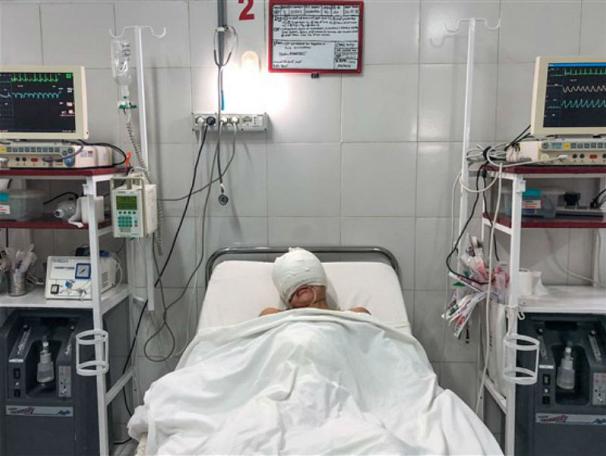Ehsanullah, 14, was missing parts of his face and skull when he was rushed into the emergency room.
His left eyeball was crushed, his right eye missing, his forehead an open wound.
He cried out as a doctor pressed gauze over his head, the material quickly turning dark red.
“They wanted to hit the Taliban, but they bombed us instead,” said the boy’s mother, Qarara, who like many in Afghanistan goes by one name. “We are sinless people. How could this happen to us?”
Most members of Qarara’s extended family were killed or wounded on Nov. 24 when at least one airstrike called in by American forces slammed into their home in Nad-e-Ali, a village in Afghanistan’s Helmand Province. Her husband, Obaidullah, and one of Ehsanullah’s older brothers, Esmatullah, died, she said. Thirteen others were injured.
They are among the latest on a growing list of casualties amid an intensifying U.S. air operation aimed at forcing Taliban militants to agree to a peace deal and end America’s longest war.
Qarara was hit by shrapnel and debris. Shortly after she arrived in the emergency room, doctors rolled in an ultrasound scanner to check that her unborn baby’s heart was still beating. It was.
From a hospital bed, Qarara despairingly described how her family became swept up in the latest wave of violence. Near her home, Taliban militants fired at warplanes, then ran inside the house.
“My husband told them to get out,” Qarara said, but a few of the fighters remained as the airstrikes hit, then fled.
In the first 10 months of 2018, U.S. military aircraft dropped 5,982 munitions on the country, surpassing the total for 2017, which stood at 4,361,according to U.S. Central Command data.
Meanwhile during the first nine months of 2018, the U.N. recorded 2,798 civilian deaths and 5,252 injured, a total of 8,050 casualties, the highest number in four years.
More civilians die at the hands of militants than in any otherattacks. Aerial operations, such as the one that devastated the family in Helmand, have accounted for less than 10 percent of the total casualties this year. That figure is a sharp 39 percent increase from 2017, a recent U.N. report found.
Source: NBC News
